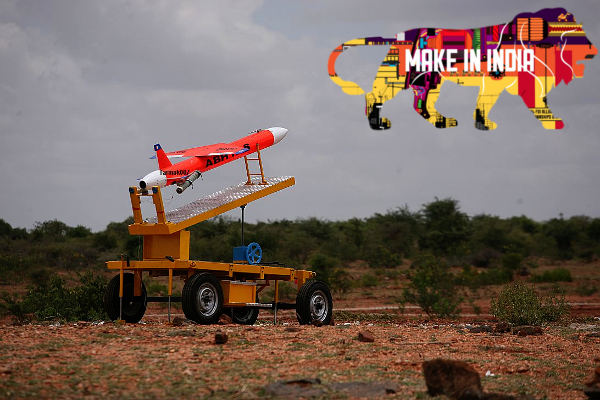The Defence Research and Development Organisation (DRDO) is aggressively pushing Abhyas – the High-speed Expendable Aerial Target (HEAT) – to enter into the production mode by next year.
Buoyed by successful text-book-launch of Abhyas last month from ITR Chandipur, the DRDO scientists are now readying the flight for another trial in the presence of Service representatives.
Abhyas was virtually put to death by the previous regime at the helm of affairs in DRDO, citing initial setbacks the programme had. All that has changed with a new team in place and Abhyas has now being given a rebirth.
During the recent trial, it flew for 32 minutes and successfully cleared 21 way-point-navigation modes. The MEMS-based (Micro-Electro-Mechanical Systems) navigation developed by RCI Hyderabad came to its rescue this time.
Unlike DRDO’s extravagant size of project teams, Abhyas had only a small and young team. The idea took birth in 2013, when the Services wanted an expendable self-propelled aerial target.
With the mandate of developing a low-cost target, scientists wanted to convert the tow-body of a recoverable Lakshya-PTA into an expendable self-propelled aerial target.
The inspiration was that they had identified a mini gas turbine engine which fits inside the diameter of the tow-body.
Having grown into a UAV laboratory, Aeronautical Development Establishment (ADE) had already developed many systems over the years. The industry too had matured enough by supporting various UAV platforms developed by ADE.
Abhyas was designed to be launched from a zero-length launcher by two 68 mm rockets. It could fly up to an altitude of 5 km and a speed of 180 met/sec. The platform had a maximum endurance of 45 minutes.
Abhyas boasts of being light weight (70kg), modular construction, easy to handle, auto-pilot, low cost, simple launcher and can be deployed in a decoy role as well.
DRDO scientists are excited about the recent trials but they have a long way to go before the Services accept it and give the go-ahead for the mass production.
While ADE over the years has tested the patience of Services with many of its projects hitting road-blocks, delays and uncertainties, it is left to be seen what future holds for Abhyas.
Similar to Abhyas, the subsonic cruise missile Nirbhay project too was revived by the DRDO top brass.
DRDO insiders say that Abhyas team is now gearing up for developmental flight trials with active user participation. The next task will be to transfer the technology to an Indian industry.
For now, they have set an internal target of December 2020 to begin production.
Until then and may be beyond, the Services will continue to test the accuracy of their weapons and air defence training against Jet Banshee, an imported target drone from the hangars of Meggit Systems, UK.
And, DRDO will have to deliver a target drone that meets all requirements of the user.
Source:MO
Image Courtesy:IDF
You may also like
-
IAF Aircraft Set Course For Exercise Eastern Bridge VII At Oman
-
IAF Set To Host The Indian Defence Aviation Exposition-II At Jodhpur
-
Defence Secretary to co-chair 5th India-Philippines Joint Defence Cooperation Committee meeting in Manila
-
Simultaneous Launch Of ‘malpe And Mulki’, Fourth And Fifth Ships Of Asw Swc (Csl) Project
-
Aatmanirbharta in Defence: MoD signs Contract with HAL for 240 AL-31FP Aero Engines for Su-30MKI Aircraft
